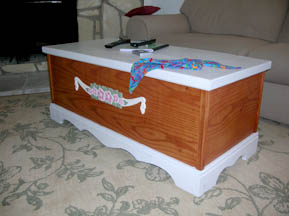|
Learning Curve
"I cut it three times and it's still too short!" The learning curve for beginners of all stripes is hardly a curve at all. There are many plateaus, valleys, and even curves ahead. Mostly it's all uphill. Let's face it, some folks will get the hang of this faster than others and not all of us are cut out to be skilled craftsmen. West Hills Wood is still waiting for our first super-bitchin' piece to get finished. We've done some good work, sold some pretty nice pieces, learned a lot of lessons, gotten frustrated enough to walk away a few times, and are still working toward getting really good at this. One of the hard parts of getting started is that many of us have been exposed to woodworking in high school shop class. It seemed a bit silly to make one of many spice racks and we never had time enough to gain a true appreciation for the art itself. Too many tools. Too cheesy projects. Too many geeks in the class. Now we find ourselves down the road and part of us believes that woodworking is something high school kids do. Or artsy types. Or old retired guys. Guess what? All of the above, including that person in the mirror. It sounds silly to think of a learning to use a hammer. Try using your left hand next time. See? Learning curve. There is an element of strength combined with timing and coordination to successfully drive a nail. What size nail? What size hammer? Why not a screw? And that's just with a hammer. We will eventually add some how-to pages here at West Hills Wood to illustrate a variety of techniques to lessen your time learning the basics of woodworking. Until then, don't lose sight of the larger goal—being better at this two years from now.
|
